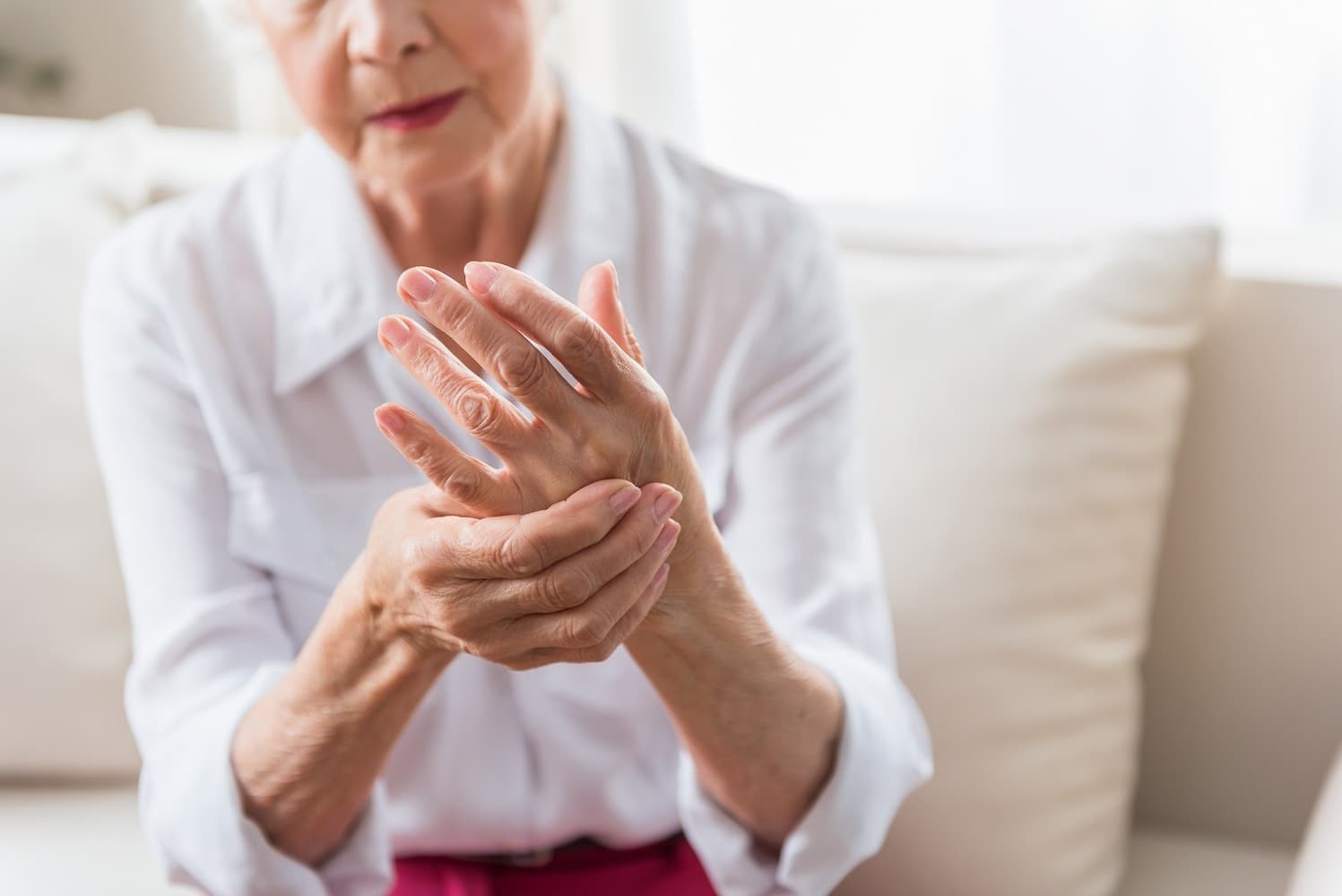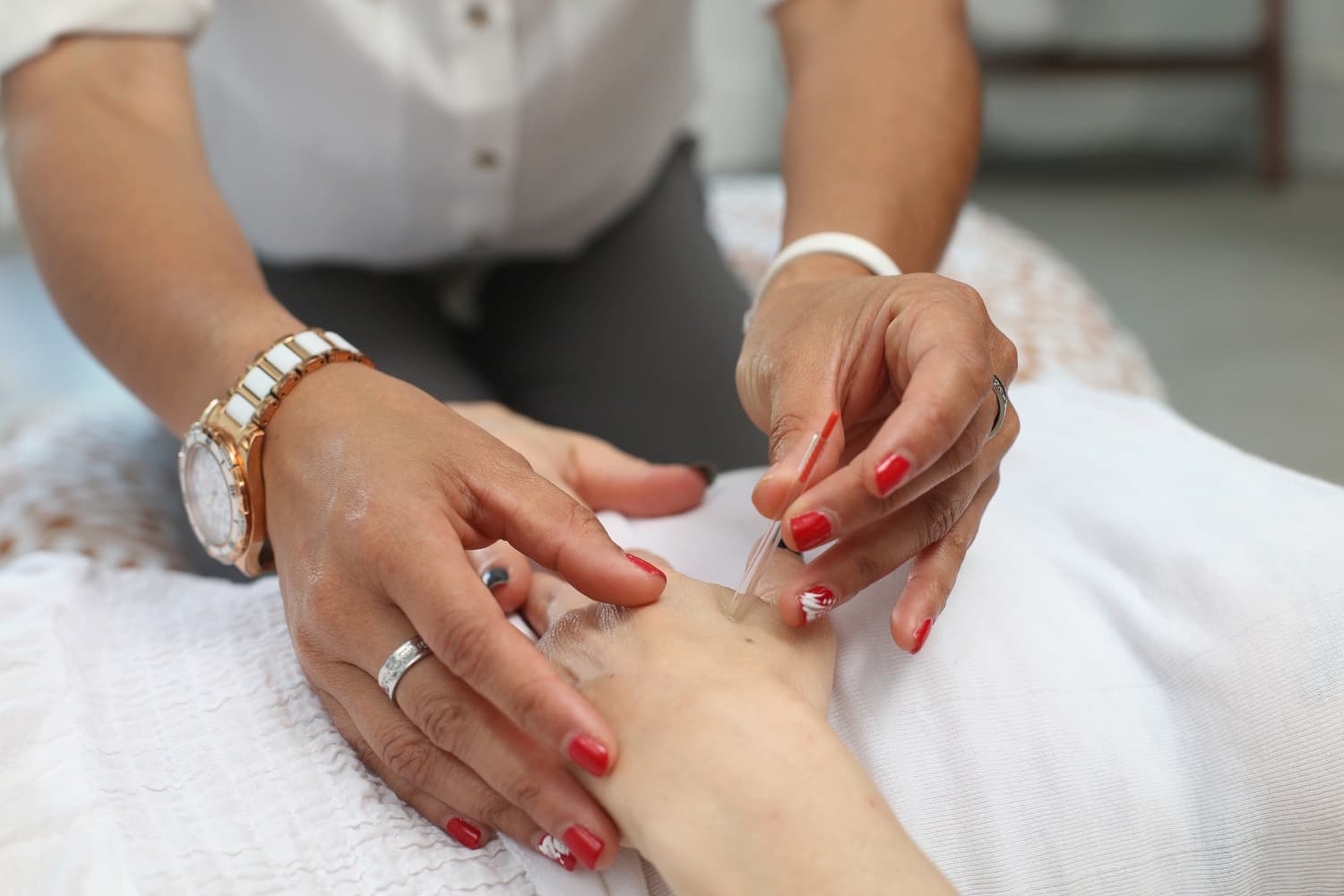
Arthritis is a chronic condition whose painful symptoms may be alleviated by complementary therapies such as acupuncture. This article takes you through the benefits of acupuncture for arthritis, regardless of what type you have or how long you've had it. Please read on for more information.
What is Arthritis?
The term Arthritis refers to a collection of musculoskeletal system conditions that affect the joints (where two or more bones meet). Joint pain and decreased range of motion are the symptoms of osteoarthritis, which is the most common form of arthritis, and other types of arthritis.
The most common forms of arthritis include:
- Ankylosing spondylitis
- Gout
- Juvenile arthritis
- Osteoarthritis
- Rheumatoid arthritis
- Systemic lupus erythematosus (lupus)
- Scleroderma
Symptoms of Arthritis
Whilst arthritis pain and other symptoms that accompany it vary between the different types of the condition, common symptoms include:
- Chronic pain
- Joint stiffness
- Joint cartilage damage
- Joint weakness
- Joint instability
- Deformities
What is Acupuncture?
Acupuncture is an ancient Chinese practice that employs needle insertion on the skin to relieve pain and restore the body from symptoms of illness or injury. The practice of acupuncture has been around for more than 4000 years; however, there is still much research being done today in order to determine the effectiveness of acupuncture in treating common conditions.
Acupuncture involves placing very thin acupuncture needles at specific points on the body in order to relieve certain symptoms. An acupuncturist uses stainless steel needles, so you won't need to worry about hurting yourself while receiving treatment. The process of needle insertion also poses no risk for infection.

Traditional Chinese Medicine (TCM) is founded on the principle that energy channels (meridians) run all over the body nourishing tissues with energy. When blocked, the energy is obstructed and prevented from nourishing the tissues, which may result in chronic conditions such as arthritis.
How Does Acupuncture Benefit Arthritis Symptoms?
Studies show that up to 20% of adults over 65 years old have osteoarthritis. Also, 10% of patients with rheumatoid arthritis are between ages 18 and 64. The use of some form of complementary therapy, such as acupuncture, for dealing with these chronic diseases has been on the rise.
Acupuncture is regarded by many experts as an effective treatment for arthritis, especially when combined with other complementary treatments such as herbal remedies or cupping therapy. It provides relief in patients with rheumatoid arthritis, osteoarthritis pain or another type of arthritis.
Acupuncture works by addressing the root of the problem, which means it goes beyond treating the symptoms of arthritis. By stimulating several acupuncture points, it facilitates the body's natural healing process and enables the following to take place:
- Strengthening Qi energy
- Unblocking trapped Qi energy
- Address any internal wind, damp-heat, cold and dampness associated with arthritis
- Detoxifying the body
- Stimulating a release of pain-killing endorphins
During an acupuncture treatment for arthritis, the acupuncturist inserts thin, sterile needles into the acupuncture points that are related to your symptoms. Once these needles are inserted, they are left in place for anywhere from 15 to 30 minutes. During this time you may feel a slight pinching or pricking sensation which is normal. Most people find acupuncture treatments very relaxing. The practitioner will usually move the needles slightly every 5 minutes or so in order to get better results.
An acupuncture session typically lasts 45 minutes to an hour. There is a possibility of experiencing some pain during the acupuncture procedure, which is the body's way of adjusting to the healing process.
Numerous clinical trials have been conducted on specific acupuncture points for arthritic treatment.
What are the Different Types of Acupuncture Treatments for Arthritis?
For people with arthritis, acupuncture has many beneficial effects regardless of how it is carried out. It can be done in many different ways including:
- Auricular acupuncture, which involves inserting needles into specific areas of the ear instead of traditional needling acupuncture
- Gua sha, which is a process of scraping acupuncture points with an instrument called a gua sha tool
- Acupuncture point injection, in which acupuncture points are injected with herbs or medicines
These acupuncture methods have been shown to be an effective and safe treatment for all types of pain associated with arthritis as they work on balancing the flow of qi through acupuncture meridians. Arthritis pain has also been linked to meridian imbalances within the body, so when needles are inserted into acupuncture points along these pathways they can greatly reduce your pain.
Because acupuncture needles are thin, acupuncture side effects tend to be very low. Common acupuncture side effects include things like experiencing sensations of pressure, feeling dizzy or sleepy after your acupuncture session, and itchy red marks on the skin where acupuncture points have been treated. When there is no prior history of any health conditions that could cause complications, then acupuncture is a safe therapy option for most individuals. The benefits of acupuncture therapy far outweigh the risks associated with incorporating it into your treatment plan. This is precisely why more people are turning to it as their go-to solution for arthritis.
Ear Acupuncture Treatment for Arthritis
Ear acupuncture is just as effective as body acupuncture as it provides pain relief by balancing the energy flow in the meridians that move through the ear. These meridians have been identified as the energy pathways in the body that need to be kept open and free of blockages in order for our vital energy, otherwise known as the source of life, to flow properly. When a person has a decreased flow of Qi, their life force, it is often accompanied by symptoms such as pain and disease. This is why ear acupuncture is so effective at helping people deal with arthritis - because it increases blood flow and the amount of energy moving through your body, which leads to better health!
Acupuncture Points for Arthritis
The acupuncture points that are stimulated in the treatment of rheumatoid arthritis, or other forms of arthritis, are located on the hand between the thumb and index finger. The other crucial points are located on top of the foot in a groove behind the big toe joint. Different acupuncture points may be addressed in the session depending on where the site of the problem is. These may include:
- Arthritis in the shoulder joints – Large Intestine 15 and Triple Heater 14 points.
- Arthritis in the elbows – Large Intestine 11 (near the bend of the elbow) and Large Intestine 4 points.
- Arthritis in the hip – Gall Bladder 30 point (located in the buttocks).
- Arthritis in the knees – Eyes of the Knee point (located in the small indentation right below the kneecap).
- Arthritis in the foot – acupuncture point located near where the toes meet the feet.
- Arthritis in the head or face – Large Intestine 4 point
- Arthritis of the ankle, jaw and spine – points near the affected area are addressed.
Acupuncture With Conventional Treatment
Acupuncture can be used in combination with medical treatment options to enhance their effectiveness. Even if you choose to use Western medicine or pain medications to treat arthritis, it's still a good idea to try certain natural painkillers like acupuncture because they can help prevent the disease from progressing further. Additionally, the therapeutic effects of this adjunctive therapy can help alleviate the common side effects of traditional drugs, which include nausea, headaches, bleeding, brain fog and allergic reactions, among others.
If you are interested in finding out more information on how acupuncture may relieve symptoms of arthritis, please speak to a professional acupuncturist or TCM Practitioner.
You can also check out these other effective natural treatments for arthritis.
Originally published on Sep 24, 2010








